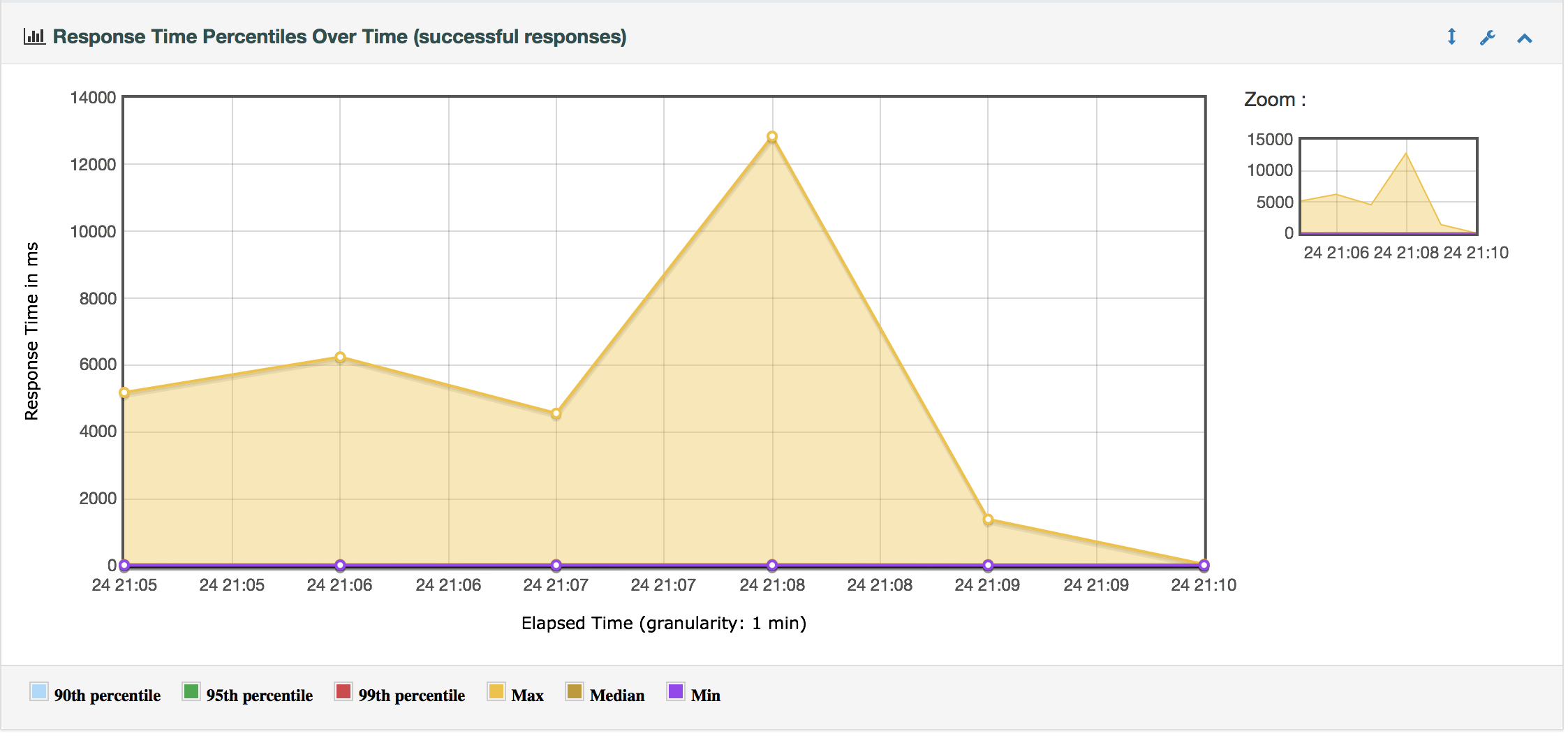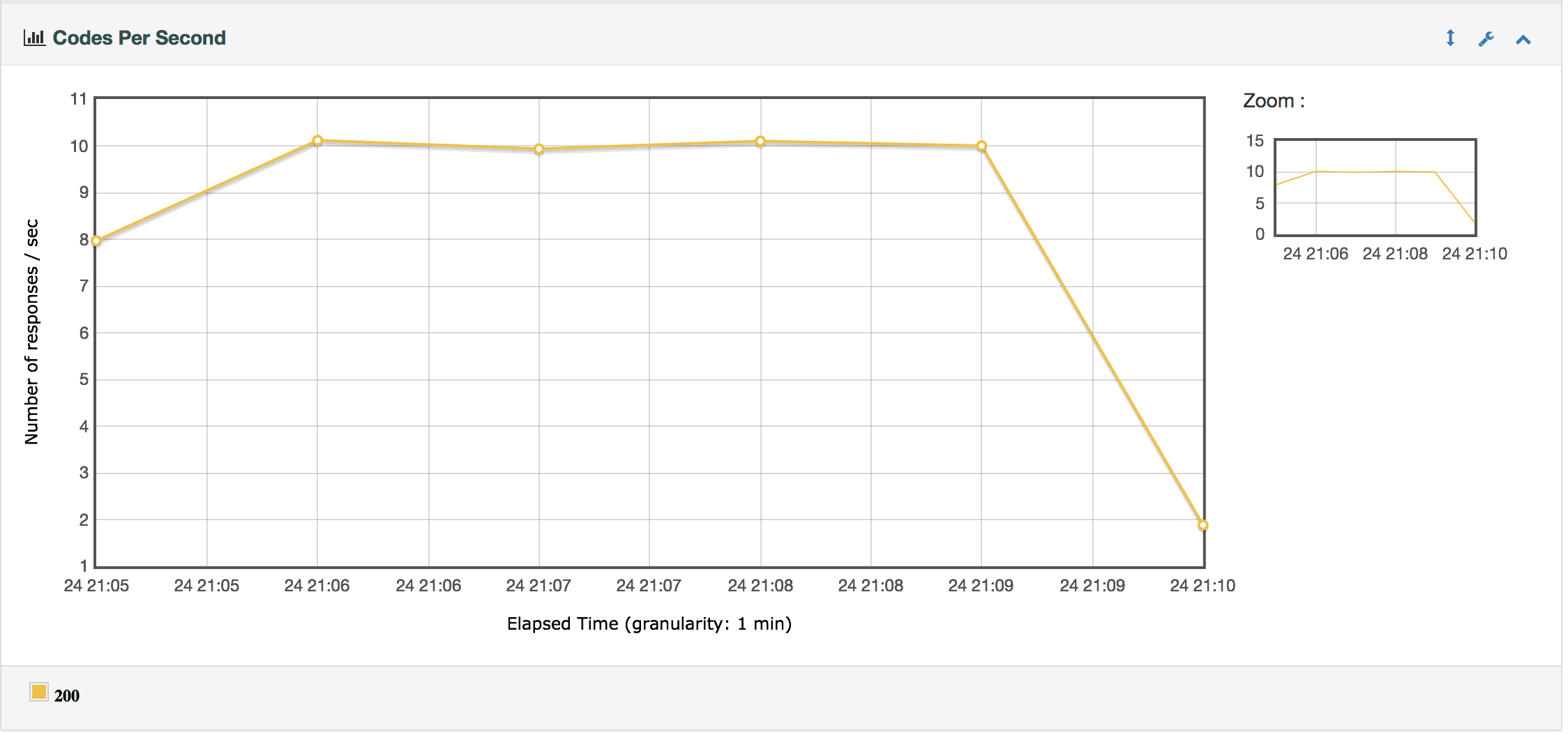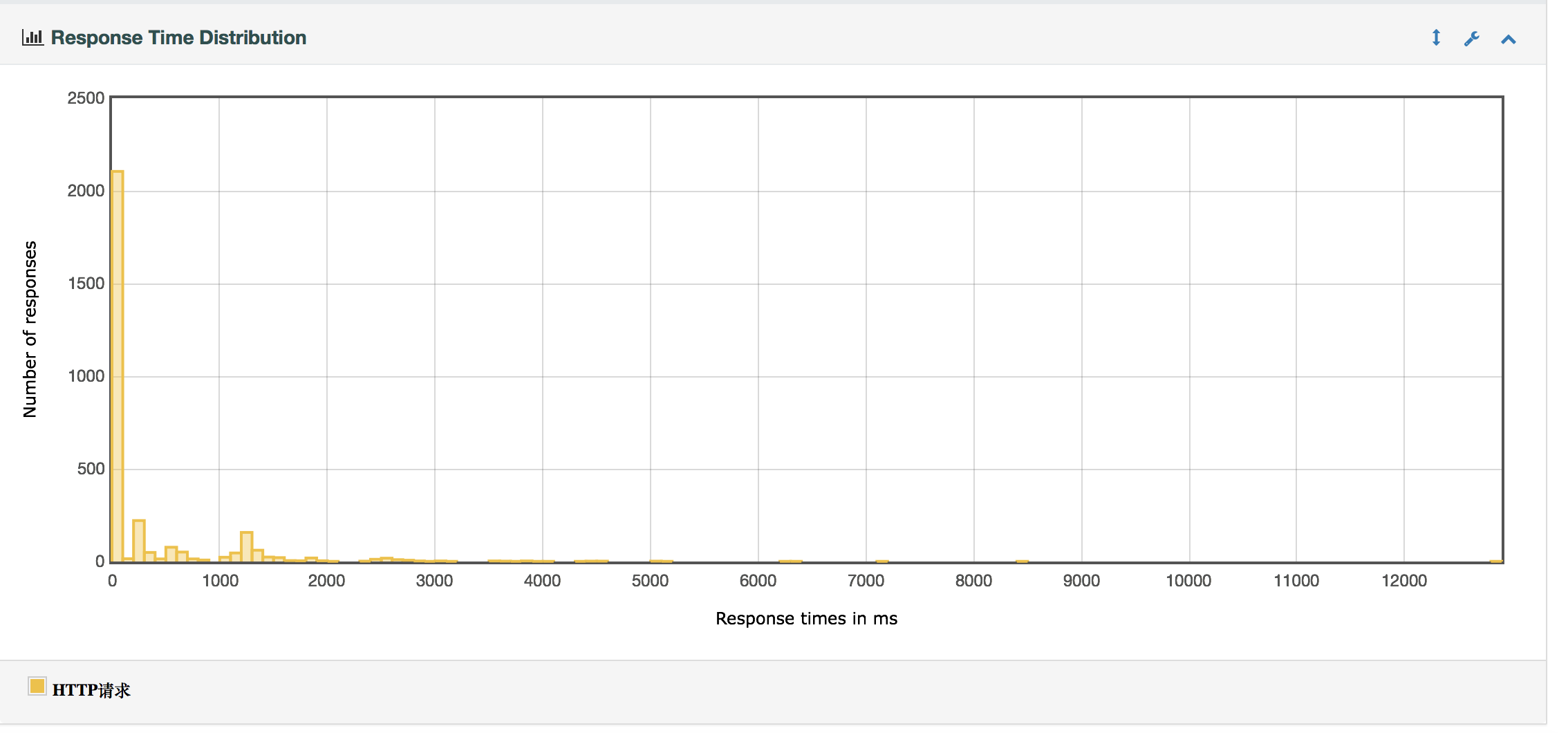jmeter:测试报告解析
html报告主要分为两个部分:baseboard与charts

一、Baseboard(基本报告情况)
1、Test and Report information(测试报告与信息)

2、APDEX (Application Performance Index)(应用性能信息)

3、Statistics(统计)

4、Error(请求异常)

二、Charts(详细报告)
Over time(每时运行时信息):
1、response time over time(响应时长):

2、Response Time Percentiles Over Time (successful responses)(90%、95%、99%线程在各个时间段的响应时间):跟聚合报告里面的90、95、99%差不多

3、Active threads over time(各个线程每时运行情况):线程多的时候看比较有意义

4、bytes throughout over time(每时接收与发送字节的情况)

5、latencies over time(每时请求的延迟时长):如图一开始延迟很高,后面有所下降

6、connect time over time(每时连接需要的时长):如图一开始请求并发高,连接需要的时间很高

Througput(吞吐量)
1、hits per second(每时发起的请求数)

2、codes per second(各个code每时响应数量)

3、teansactions per second(每时事物响应数目)

4、total transations per second(总每时事务请求曲线)

5、response time vs request(每时各个请求响应类型的平均响应时间)

6、latency vs request(各个请求类型的每时延迟时间)

Response time(响应时间)
1、Response time percentiles(响应时间百分比分布)

2、response time overview(响应时间条状对比图)

3、time vs threads(各个线程平均响应时间,实际中看运行拐点来定为性能瓶颈的参考值)

4、response time distribution(测试过程中多少线程数占响应时间比例图)

三、设定取样间隔时间:
在上面的测试中,采用的是默认取样时长“一分钟”,总共运行了5分钟;
设置取样间隔时间在jmeter/bin/user.properties文件中,搜索字段:granularity,修改后面的值:
一秒的设置为:jmeter.reportgenerator.overall_granularity=1000

如图:需要拉大才看得到




